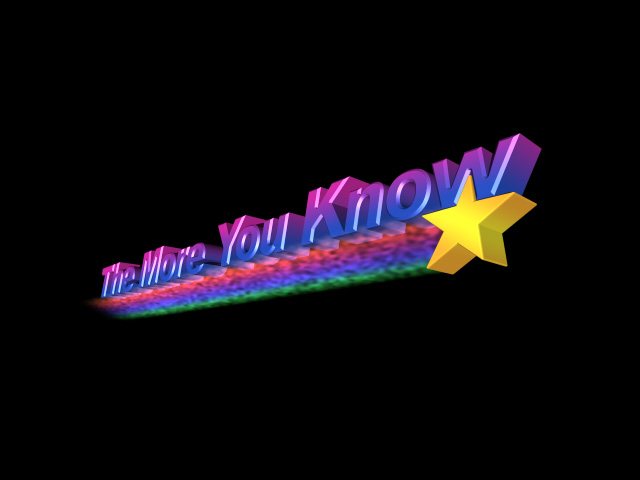[DAILY FACTS #4] Norse Mythology
 •
by
•
by Legendardisch
Welcome to a new Daily Facts, with this time
NORSE MYTHOLOGY

1. In Norse Mythology, there are nine worlds, and these are divided into three levels.
In the first level is Asgard, the home of the Aesir.
Vanaheim, the home of the Vanir.
Alfheim, the home of the Light Elves.
In the middle is Midgard "Middle Earth", the home of the Humans. Midgard is connected to Asgard by Bifrost "The Rainbow Bridge".
Jotunheim, the home of the Giants.
Svartalfheim, the home of the Dark Elves.
Nidavellir, the home of the Dwarfs.
Niflheim is to the north, somewhere in Niflheim under the ground is Helheim home of the dead.
Muspelheim is to the south, it is the home of the fire Giants and Demons.
2. VALHALLA:
Valhalla (pronounced “val-HALL-uh”; Old Norse Valhöll, “the hall of the fallen”) is the hall where the god Odin houses the dead whom he deems worthy of dwelling with him. This is not a reward for moral behavior or anything of the sort, however; most of those to whom he grants access to Valhalla are distinguished warriors whom he collects for the perfectly selfish purpose of having them come to his aid in his foredoomed struggle against the wolf Fenrir during Ragnarok.
3. Midgard Serpent:
The Midgard Serpent also known as Jormungand, the Midgard serpent, is the child of Loki. it was Odin who threw him into the sea. But the Midgard serpent loved the ocean, and it started to grow tremendously large. And within a short time had the Midgard Serpent grown so huge it encircled all the land. The Midgard Serpent was feared by human and also the gods. Thor and the Midgard serpent are arch enemies. They will kill each other at Ragnarok.
4. Mjölnir:
Thor's hammer is called Mjölnir. Mjölnir is one of the most fearsome weapons, capable of leveling mountains. Thor's hammer can hit any target. After the target is hit, the hammer will return to Thor's right hand all by itself. The hammer can send out lightning bolts. The hammer Mjölnir can be used to kill and destroy, but also revive people or animals. Thor's hammer can also be magically shrunken to fit inside Thor’s shirt. The hammer Mjölnir is also used in sacred ceremonies; it can be ceremonies about birth but also death. Thor's hammer is forged by Brokkr and Eitri. The Hammer Mjölnir was once stolen by the Jotun Trym, and the price for getting it back was the hand of the fertility goddess Freya.
5. Nidhug: Corpse Eater
Nidhug is the dragon that lives in Hel, in Niflheim, at the root of the tree Yggdrasil. Nidhug feeds on the roots of Yggdrasil and the corpses of the dead.
6. Yggdrasil: The Tree of Life
In the middle of Asgard, where the gods lives, is Yggdrasil. Yggdrasil is the tree of life. It is an eternal green Ash tree; the branches stretches out over all of the nine worlds, and extend up and above the heavens. Yggdrasil is carried by three enormous roots. The first root from Yggdrasil is in Asgard, the home of the gods. By this root is a well named Urd’s well. This is where the gods held daily meetings. The second root from Yggdrasil goes down to Jotunheim, the land of the giants, by this root is Mimir's well.
7. The Viking are the people from the northern countries of the Scandinavia which includes:- Norway, Denmark and Sweden, and that is why they were called the Norse men, as they are from the north. These people were religious and practiced Asatru as their form of religion.

8. ASGAR
😨
Asgard (Old Norse Ásgarðr, “Enclosure of the Aesir) is one of the Nine Worlds of Norse mythology and the home and fortress of the Aesir, one of the two tribes of gods (the other being the Vanir, who have their home in Vanaheim). Asgard is located in the sky (albeit invisibly, of course – see pantheism and myth) and is connected to Midgard, the world of humanity, by the rainbow bridge Bifrost.
9. VALKYRIES:
A valkyrie (pronounced “VAL-ker-ee”; Old Norse valkyrja, plural valkyrjur, “choosers of the fallen”) is a female helping spirit of the god Odin. The modern image of the valkyries as elegant, noble maidens bearing dead heroes to Valhalla is largely accurate for what it is, but a highly selective portrayal that exaggerates their pleasant qualities. To some extent, this tendency toward sanitization is present even in the later Old Norse sources, which focus on their love affairs with human men and their assisting Odin in transporting his favorites among those slain in battle to Valhalla, where they will fight by his side during Ragnarok.
10. ODIN:
Odin (pronounced “OH-din”; Old Norse Óðinn, Old English and Old Saxon Woden, Old High German Wuotan, Wotan, or Wodan, Proto-Germanic *Woðanaz, “Master of Ecstasy”) is one of the most complex and enigmatic characters in Norse mythology, and perhaps in all of world literature. He’s the chief of the Aesir tribe of deities, yet he often ventures far from their kingdom, Asgard, on long, solitary wanderings throughout the cosmos on purely self-interested quests. He’s a relentless seeker after and giver of wisdom, but he has little regard for communal values such as justice, fairness, or respect for law and convention. He’s the divine patron of rulers, and also of outcasts. He’s a war-god, but also a poetry-god, and he has prominent transgender qualities that would bring unspeakable shame to any traditional Norse/Germanic warrior. He’s worshiped by those in search of prestige, honor, and nobility, yet he’s often cursed for being a fickle trickster. What kind of literary figure – let alone a god whose historical worship spanned much of a continent and several centuries – could possibly embody all of these qualities at once, with their apparently glaring contradictions?
Suggest me tomorrows topic, and let me know in the comments below which fact amazed you!



Comments
Yeah!
Fornnordiska mytologin, Fantastisk!
Like it!
Next one, technology 😉
Til Valhall!
Next topic: talk about Chief Big Bear, a past leader of my nation!
http://en.wikipedia.org/wiki/Big_Bear
Or maybe about the Aztecs?
Nit-picker here, ''Viking'' was never used to talk about the people('s). It was essentially a trade term for Trader/explorer/raider.